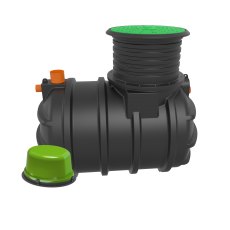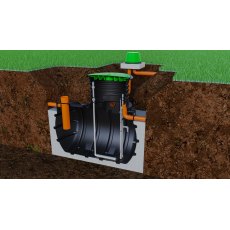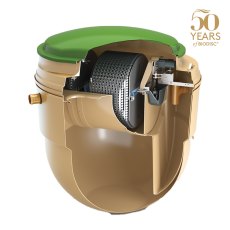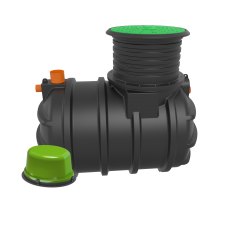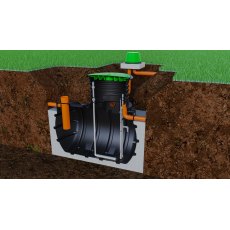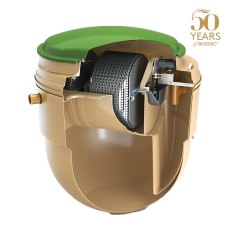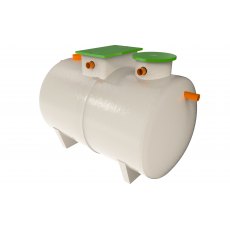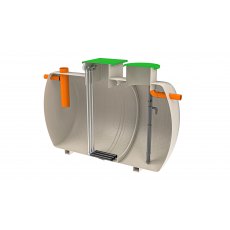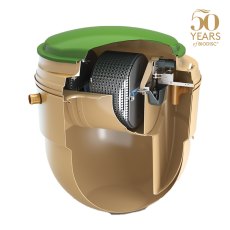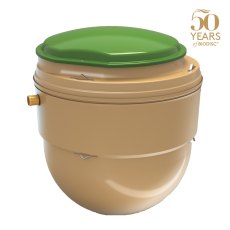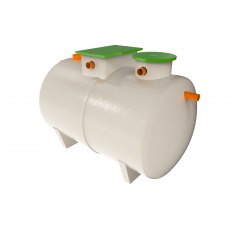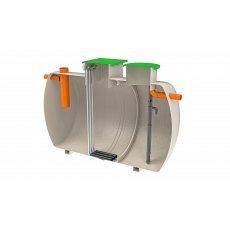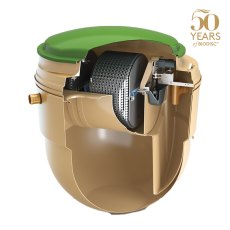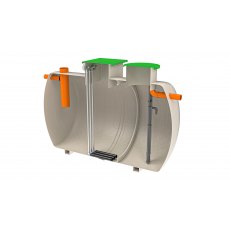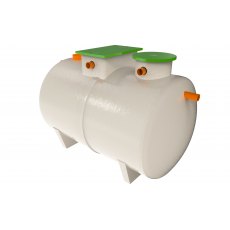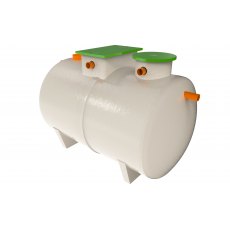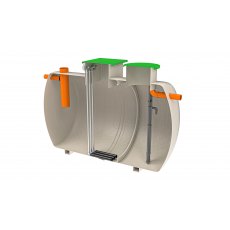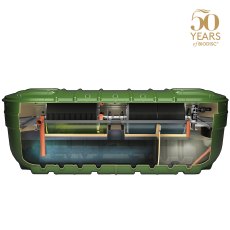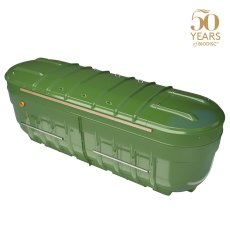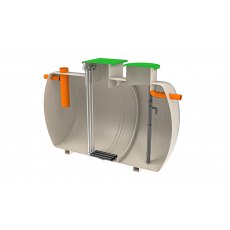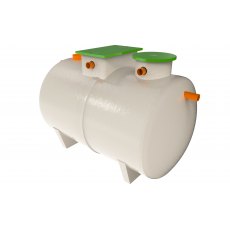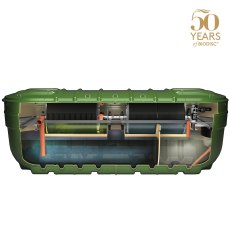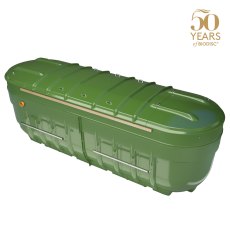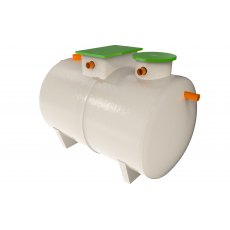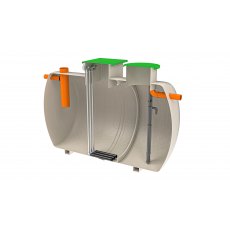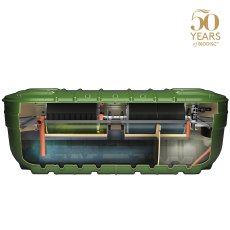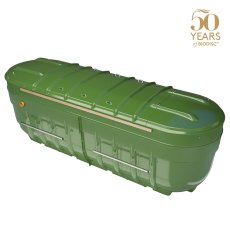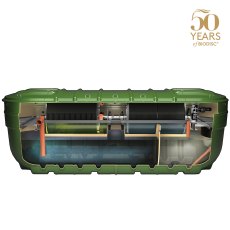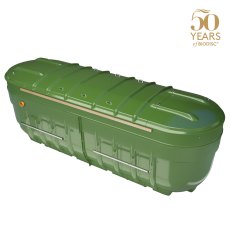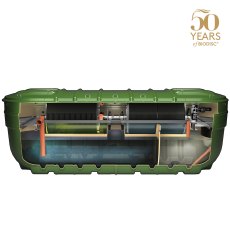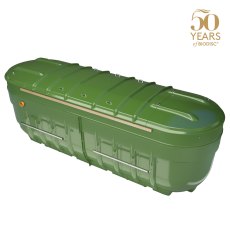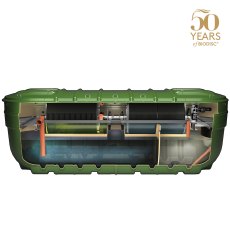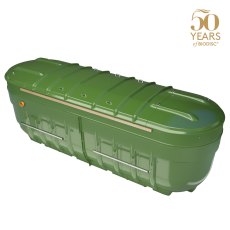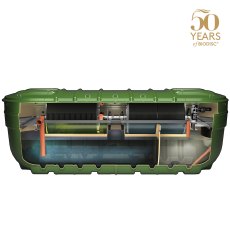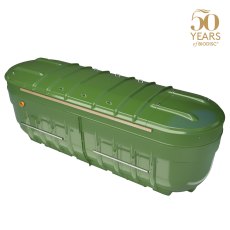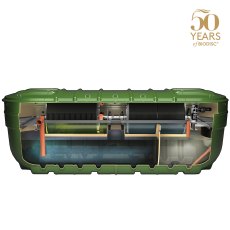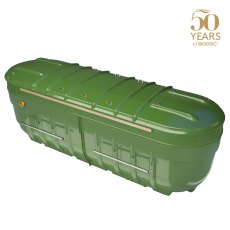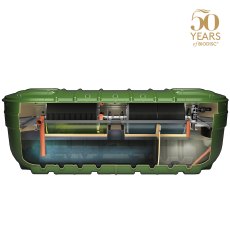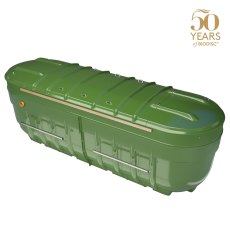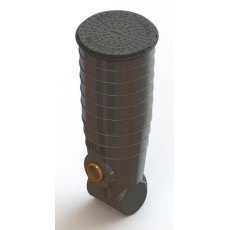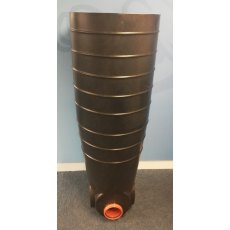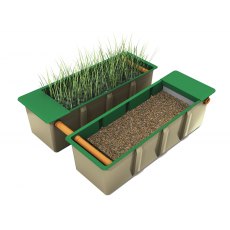Featured Products
(£2,511.60 inc VAT)
Klargester Sewage Treatment Plants
How much does it cost to run a Klargester?
Designed for domestic and commercial use, a Klargester sewage treatment plant processes sewage through biological and mechanical means, ensuring the effluent is safe to discharge into a watercourse or drainage field. You might choose one for its reliability and ability to meet environmental standards, making it a sensible option for rural homes, small businesses, or larger sites needing effective wastewater management. The running costs depend largely on the model and its power requirements. Smaller units like the BioDisc BA, suitable for up to six people, typically use a motor and gearbox, and will cost less to run than larger aeration-based models like the BioFicient or BioTec. Beyond electricity, you’ll need to factor in periodic servicing and desludging, usually recommended once a year, to keep the system in good working order, which adds to the overall expense but ensures long-term performance. Compared to alternatives like Klargester septic tanks, which require regular emptying but no power, a sewage treatment plant offers the benefit of treating wastewater on-site, reducing environmental impact and often proving more cost-effective over time.
How do you know when a klargester is full?
Klargester sewage treatment systems are built to treat sewage for properties without access to mains drainage, such as rural homes or small commercial sites, using a combination of biological processes and mechanical components to produce effluent safe for discharge into a watercourse or drainage field. They offer a reliable, environmentally friendly way to manage sewage, providing an effective alternative to options like Klargester septic tanks, which simply store waste until it’s emptied. Unlike septic tanks, a sewage treatment plant doesn’t ‘fill up’ in the traditional sense – its capacity is designed to handle a steady flow based on the population it serves – but you’ll know it needs attention if you notice signs like slow drainage, unpleasant odours, or a backup in your plumbing, indicating the system may be overloaded or due for desludging. Regular maintenance, typically once a year, keeps sludge levels in check, and many models, like the BioDisc, have a settlement tank where solids accumulate. If this gets too full, an alarm or visual inspection during servicing will alert you. You’ll appreciate the system’s design for its practicality and low upkeep, ensuring it runs smoothly while meeting regulatory standards, making it a worthwhile investment for your long-term wastewater management.
What is the lifespan of a Klargester?
Designed to treat sewage through biological and mechanical processes, Klargester sewage treatment plants produce effluent safe for discharge into a watercourse or drainage field, offering a practical alternative to Klargester septic tanks which store waste rather than treat it. You might choose one for its ability to meet environmental standards while providing a long-term, efficient way to handle sewage, and with proper care, a Klargester sewage treatment plant can last 20 to 40 years, sometimes even longer, depending on the model and how well you maintain it. Regular servicing, typically once a year, and desludging when needed help ensure the system remains in good working order, while the durable materials used in models like the BioDisc or BioFicient contribute to their longevity. You’ll value the peace of mind that comes with a system built to perform reliably over decades, making it a worthwhile investment compared to alternatives that may need more frequent replacement or intervention, all while keeping your property compliant and functional.
Klargester Sewage Treatment Plants FAQs
Who or what is Klargester?
Kingspan Klargester is one of the world's leading manufacturers of wastewater treatment systems, with over 65 years experience, within the industry, With a global reputation specialising in the manufacture of packaged pollution control products, Klargester has developed a range of innovative products, revolutionising methods of dealing with the treatment of sewage on sites where mains drainage is not available.
Their extensive range of Klargester products include Sewage Treatment plants, septic tanks, Cesspools, fuel and oil separators and grease traps.
How often should I empty my Klargester tank?
Sludge builds up in septic tanks and it must be regularly removed to keep your Klargester tank working for as long possible. Tanks that are poorly maintained will need repairing or replacing sooner and could experience issues like bad smells, blocked pipes, cracked and blocked pipes, and failed motors and pumps. You may also notice soggy ground and pools of water forming around the drainage point, a sign that the effluent is not draining from the house quickly enough, are all indications that your Klargester septic tank is not coping.
You should get the sludge that builds up in your septic tank removed, a process called ‘desludging’ before it exceeds the maximum capacity. We recommend your Klargester tank should be desludged a minimum once a year and always ensure that the company you use to remove the sludge is a registered waste carrier.
How does a BioDisc work?
The BioDisc uses a Rotating Biological Contractor (RBC) system which includes three stages to treat waste water. After the water has passed through a primary settlement tank, where heavy solids settle to form a sludge in the bottom of the tank, it moves into the Biozone for breaking down by microorganisms on the RBC. Suspended solids return to the primary settlement zone, and the liquor is transferred to the second stage Biozone for further treatment. Any remaining solids are settled out in the final settlement tank, leaving the remaining effluent clean enough to be discharged into a watercourse.
Do I need planning permission for a Klargester septic tank?
If you are planning to install a new septic tank, you will need planning permission from the local authority. This applies to residential sites, as well as commercial. If you already have an existing septic tank installed, either at home or as part of your business premises, you won’t need planning permission if you are simply intending to replace it. It doesn’t matter how old your existing septic tank system is — you can have it upgraded or replaced entirely, and you won’t require planning permission from your local authority.
How close can a septic tank be to a dwelling?
Septic tanks sit underground and release wastewater slowly into the surrounding environment. For this reason, they must be installed at least seven metres away from a house or ‘habitable property’ and at least 50 metres away from any water sources. It is very important that you comply with all regulations for both health and safety and environmental reasons. You will also need to check if you need a permit, which usually depends on where you intend to release your wastewater.
How much does it typically cost to install a septic tank in the UK?
There are lots of factors that might affect the cost of replacing or installing a new septic tank. Costs can be high depending on where you live, the type of ground you’re installing the septic tank into, and many other factors. After you have selected and paid for your chosen septic tank, the installation cost could be anywhere from £2,000 to £4,000.
With replacement septic tanks, a lot of the infrastructure like pipework, plumbing and foundations will already be there – helping to keep costs down. Remember, though, that you’ll need to empty out all the sludge that’s built up over time from the old tank and rinse it until it’s safe enough to remove to the waste disposal site. New septic tank installations will require new plumbing, pipework, and foundations, as well as somewhere to dispose of the soil or ground dug up. Installing your septic tank could take anywhere from three to seven days, all which will be factored into the price.
How does a Klargester Septic tank work?
A Klargester septic tank disposes of the sewage and wastewater from your property. It collects the wastewater from your property and separates the solids from the liquids, and then any leftover effluent is discharged into a drainage field or soakaway.
There are three different types of septic tanks, each with their own benefits and suitability to different properties and individual requirements.
The Alpha Klargester septic tank
One of the most popular Klargester septic tanks, the Alpha tank is light, watertight, and particularly strong. Thanks to its shape the tank is easy to handle and install and has a subtle visual impact that many people find desirable.
The Sigma Klargester septic tank
Light, robust, and chemically resistant, the Sigma Klargester septic tank is one of Klargester’s easiest tanks to install. The reduced excavation costs make the Sigma Klargester a popular choice.
Gamma Klargester septic tanks
If you’re looking for a more environmentally friendly choice, look no further than the Gamma Klargester septic tank. It is easy to install, durable, strong and lightweight.

 Login
Login